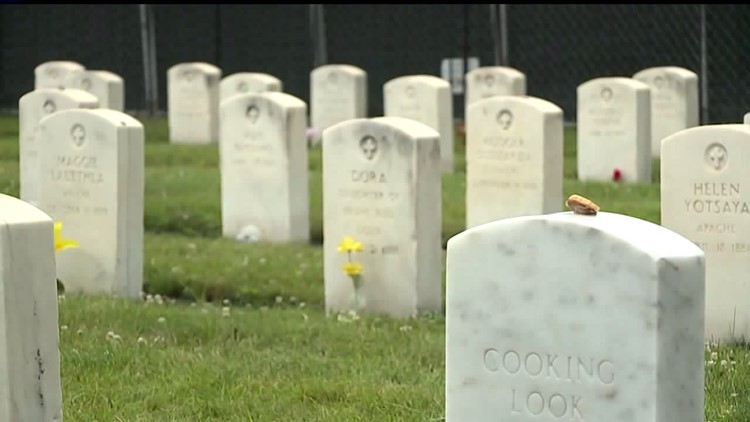NORTH MIDDLETON TOWNSHIP, Cumberland County, Pa. --- Following a month-long disinterment project at the Carlisle U.S. Army barracks, the bodies of six teenagers are back with their ancestral tribes approximately a century after their deaths.
Ophelia Powless, Sophia Caulon and Jamima Metoxen of the Oneida tribe, Alice Springer from the Omaha tribe, Henry Jones from the Iowa tribe, and Adam McCarty of the Modoc tribe were all transferred to their families by the U.S. Army.
Experts believe the six teenagers died between the years 1880-1917 while attending the Carlisle Indian Industrial School.
They were buried at the school after their deaths and were moved in 1927 when the Army made the decision to move the cemetery. They remained there for a little more than 90 years until a team of three archaeologists, two forensic anthropologists, and two supervisory personnel disinterred their remains.
Dr. Michael Trimble, an archaeologist with the U.S. Army Corps of Engineers, said the construction, fabrication and placement of the wooden caskets were consistent with late 19th, early 20th century burial practices.
“The containers in the graves were generally centered in a generally rented in a grave shaft measuring 18 inches wide and three to four feet long, which had been excavated to a depth of two and half feet," said Dr. Trimble.
He said the "placement and process" of the burials of these six teenagers were similar to that of two previous disinterment projects in the same cemetery.
Using documentation about the six teenagers, including their age and gender at the time of their deaths, Dr. Elizabeth DiGangi, a forensic anthropologist, said they used internationally-accepted growth and development standards of bones and teeth to determine if the skeletons were the people they were looking for.
“Everyone is going to pass through those growth stages: You go from infancy, to childhood, to adolescence, to adulthood. You’re reaching different milestones along the way and we’re able to read what those milestones are in the bones and the teeth,” said Dr. DiGangi.
Rebeka Jones, the primary next of kin for Henry Jones, one of the teenagers disinterred, issued the following statement:
"Today, we have lots of feelings, some of them conflicting. One one hand, we are happy and so grateful to this team who has made it possible to bring our relative home.
We thank the Army and its kind and capable staff for this.
On the other hand, we think about what [Henry] and so many others went through -- being taken from their homes to places so foreign to them; their [identity] and culture stripped from them, sometimes brutally. This is something we carry with us -- the happiness and the sadness and anger. It will take time to work through [this], but we feel as if bringing our loved one home is a good first step. We would encourage other tribes and families to come get their children as we have.
We know there are Sac and Fox and Kickapoo children here at this cemetery. We would encourage them and other tribes to come get their children. This is an opportunity to find healing and wholeness, to find what which was lost and can still be found.
We pray for all of us together!
Art Smith of the Army National Military Cemeteries, who served as the project leader, said they anticipate additional disinterment efforts over the next few years.
He said they are having on-going conversations with "several" tribes that have expressed interest in recovering ancestors.
Officials say they have recovered twelve individuals across three disinterment efforts.



